If you’re a regular consumer of gun content, I can imagine what you are thinking right now. Oh great, another article explaining how a pistol from Turkey is a good deal. How it’s oh so underrated and flawless and gosh we were all so surprised that it ran reliably, who could have guessed? You’re waiting for me to explain that you should buy one because it’s “just as good” as similar guns selling for twice or three times as much. While the Tisas Night Stalker DS may not match those lofty heights, I am quite taken with this gun and thinks it’s a great bargain for the price. Let me explain why.
First, let’s be clear on the name versus what the gun really is. They can’t call this gun a “2011” due to copyright and trademark laws so I won’t either, but if there’s something you don’t like about your pistol, you’ll find that replacement parts compatible with the 2011 pattern fit and work just fine. This was one of the factors that encouraged me to take a chance on purchasing a Nightstalker DS—if anything went wrong, off it would go to my favorite gunsmith who already knows all about this type of pistol and has piles of parts that will fit it. However, it turned out he hasn’t been needed yet—detail-stripping the gun down to its bare frame revealed the internal parts to be all forged, no metal-injection-molded internals. I was so surprised at this that I emailed SDS Arms, the importer, for confirmation.
Full-Featured, Double-Stacked
Open the well-made-but-typical polymer box and there are no surprises. You get two Checkmate-manufactured mags of the industry standard pattern, a pistol lock, user manual, cleaning brush and a chamber flag. The cut foam inside the case has two removable pieces that enlarge the space for the gun. One creates room for an optic on top of the gun and the second creates room for a weaponlight mounted on the made-to-correct-specs 1913 MIL STD frame rail. Only two other bits of note: first, there’s a spare (shorter) pin for the mainspring housing, in case you want to drive out the (longer) existing pin and remove the oversize magazine well that comes installed on the gun. That’s mighty considerate. Second, Tisas included a barrel-bushing wrench in the box but annoyingly it doesn’t actually fit over the barrel bushing on my gun.
That brings me to the only major technical difference between the Night Stalker and similar pistols on the market right now. Other double-stack guns of this pattern often use a bushingless bull barrel and one- or two-piece guide-rod assembly. The Tisas uses the old standard barrel bushing and “G.I.” plug underneath the barrel to retain the recoil spring. This definitely subtracts cool kid points versus its more expensive competitors, but does it adversely affect the mechanical accuracy of the gun, and to what extent? Since it’s not a bull barrel, at least Tisas gave us a barrel threaded to the industry standard ½x28 tpi pattern. Just for fun I like to hang my old SilencerCo Octane suppressor on the end of this gun, and it still runs 100 percent with the can on the end and subsonic 147-grain ammo.
Shooting The Tisas Night Stalker DS
Shooting the Night Stalker DS, I immediately understand why pistols of this pattern are super popular right now. I’ve spent the past few years with most of my pistol time behind striker-fired, polymer-frame guns, so that’s my baseline for comparison. The grip is large by any standard and I wondered how my average-size hands would cope, but all that real estate also means it’s easy for my support hand to press hard against a lot of left grip panel. Getting a proper grip on the gun wasn’t nearly as difficult as I had feared. The relatively heavy weight and large grip make recoil control and follow up shots stunningly easy, like I’m using a cheat code in a video game. Similarly, the short travel and overall feel of the 1911 single action trigger beats just about any striker-fired trigger on the market. The combination of great trigger, “flat shooting” soft recoil, and 17-round capacity means this gun eats ammo like a Dodge Hellcat eats 93 octane. It’s an easy gun to shoot fast without fatigue and it encourages you to try that drill just one more time. 50, 100, 200 rounds can go by effortlessly before you realize it. Whoa, my ammo bag is empty already?
Yet at the same time, I know exactly where Tisas changed things to make this gun as affordable as it is. The most obvious is the ceramic-coating finish, an odd grey-green hue that reminds me a little bit of aged parkerizing. Most of the premium 2011 pattern guns feature some sort of DLC (diamond-like coating) or PVD (physical vapor deposition) finish, both of which are superior to the spray-n-bake finish found on this gun. Compared to the finish on a Glock, Smith & Wesson or other manufacturers, the Nightstalker DS will show holster wear, for example, more quickly in the real world. Less obviously, the mainspring housing and magazine well are polymer, not aluminum or steel. Other famous manufacturers have done this in the past (Colt 1991 series, I am looking at you) but it was a cost-cutting measure then and it’s a cost-cutting measure now. Does making these parts from polymer adversely affect the performance or longevity of the gun? I’m not qualified to say that, but it’s definitely something I can point to that you’ll never see on the $2,500-and-up brands.
Less obvious but still very real is the quality of machine work in non-essential areas, which can only be seen once you field strip the gun for cleaning or go a step further and take it down to the bare frame. This isn’t to say that the Tisas isn’t carefully made in the places where it matters. For example, the fully ramped barrel features a nice, smooth feed ramp that has digested flat nose and hollowpoint bullets with zero malfunctions of any kind by the hundreds, so clearly it was made properly. But, the sides of that feed ramp are uneven and wavy, and barrel-to-frame fitment in the ramp area is not pretty. As I shot the gun, it quickly wore the finish off the frame-rail area, revealing endmill tooling marks where the high spots are shiny and the low spots still show the sprayed-on green finish. The gun still functions 100 percent, so guess how much I care? Still, if you’re wondering why the gun costs so much less, that’s why. Holding it up side by side against a $4,000 Staccato is like pulling up your old Corvette next to a Ferrari. The Corvette is America’s sports car, but the Ferrari guy will still sneer because the Vette’s door handles are exactly the same as a Malibu from the same year. It doesn’t make the Vette any slower, but once you’ve learned how the maker saved expenses, you just can’t unsee it.
I mentioned the Cerakote finish and also the “great” 1911 style trigger, and more needs to be said here. The trigger was not great out of the box—it was gritty and heavier than I like for a 1911/2011-style trigger. Detail stripping the gun, I discovered that all the internal parts had been coated black with the same spray-and-bake ceramic stuff you see on the outside of the gun, including the engagement surfaces of the hammer, sear, disconnector, etc. Without changing any angles or removing metal I polished off that coating with a buffing wheel and some jeweler’s rouge, tweaked the fork spring just a hair, and voila! Trigger smoothness improved tremendously, trigger weight went down to less than 4 pounds, and it’s now good enough that I find myself wishing the trigger shoe itself had an overtravel screw. If you aren’t comfortable detail stripping and tinkering with your gun, give your local gunsmith some business– they could easily and quickly do what I did, with all the factory parts already installed in the gun.
With the trigger sorted it was time to test accuracy at 25 yards.
Group Therapy
I’d noticed that the Tisas shot a bit high at distance with the iron sights, and I prefer optics for precision work, so I bolted a 6-MOA red dot onto the Holosun K-series footprint milled into the slide. Well played by Tisas for just putting a super common and practical optic footprint right on the slide instead of overthinking it with a complicated modular plate system that takes six different plates and assorted mess of screws. No puzzle to solve, just buy a RMSc- or K-series-footprint dot and use common M3x0.5 screws, hopefully they come in the box with your optic of choice. I shot from a soft bag, slowly firing five groups of five rounds each with three different bullet weights and brands of ammo. Considering the budget nature of the Tisas, my choice of 115-grain ammo was the cheapest I could find, Monarch. Shooters on a budget with their firearms are generally also on a budget with their ammo, so let’s keep it real right? The result was a disappointing 4.5 inch average group at 25 yards, oh boy. Had I found the fatal flaw that would keep me from recommending this pistol? I moved on to 124-grain Federal Syntech, a very soft shooting load favored by competition shooters, and was rewarded with a best grouping of under 2 inches at 25 yards, and an average group size of 2.78 inches. Similarly, Magtech 147-grain rounds also had a best group size of 1.9 inches and an average 25 yard group size of 3 inches.
I’m going to admit freely that putting down a total of 75 rounds slow fire at 25 yards in one session was more sitting slow fire than I’ve ever done with a pistol before. It isn’t the kind of shooting I normally do with handguns, and I’m not an expert at it by any means. I just pretended the Tisas was a precision rifle and slowly stacked pressure on the trigger while relentlessly maintaining my sight picture until each shot broke. The poor showing from the 115-grain stuff might be due to the price point of the Monarch ammo, or it could have been me getting used to shooting a pistol from a bench for the first time in a long time. That being said, it looks like this gun doesn’t seem to have a “favorite” bullet weight and with quality ammo you can probably expect 3- to 4-inch groups at 25 yards. Atlas Gunworks owners will point and giggle at this, but don’t laugh too loud fellas—Kart, KKM, Schuemann and others make affordable match bull barrels that my smith can hand fit into the Tisas slide for a reasonable rate. So don’t tempt me to upgrade—Karl has to put food on the table too, you know.
Better Bang For Your Buck
As it stands, for the level of shooter I am and the type of shooting I do, I’m seriously not going to be running up against the limits of this gun’s accuracy as I’m huffing and puffing in the low-level competitions I participate in. But I can compete, even with two kids in college right now, thanks to the low entry price of acquiring this gun. The Tisas Nightstalker DS has now functioned absolutely flawlessly through a couple thousand 9mm rounds of various brands and bullet weights. Buying cheap ammo in bulk and practicing regularly, I’m becoming a better shooter with this pistol in my hands. So notice is served to my competition buddies—no, my little Turkish Tisas isn’t just as good as your race gun that costs twice as much. But if you hit a no-shoot target, flub a reload, forget to zero your optic, or catch a malfunction on the timer, I’m just one step behind you and ready to take advantage of the smallest mistake.
Game on.
Tisas Nightstalker DS Specifications:
- Manufacturer: Tisas USA
- Importer: SDS Arms
- Action Type: Single-action only
- Caliber: 9mm
- Capacity: 17+1 rounds
- Grips: Polymer
- Frame: 4140 Carbon Steel
- Barrel: 4140 Forged Steel
- Barrel Length: 5.5 inches
- Rifling: 1:10-inch RH twist button rifled
- Sights: Dovetailed steel, front sight tritium insert surrounded by orange ring, rear sight U-notch
- Trigger Pull Weight: 4 pounds, 12 ounces
- Length: 9.3 inches
- Width: 1.62 inches
- Height: 5.74 inches
- Weight: 35 ounces
- Accessories: Two 17-round magazines, gun lock, barrel bushing wrench, spare mainspring housing pin, chamber flag, manual
- MSRP: $959.99

Read the full article here



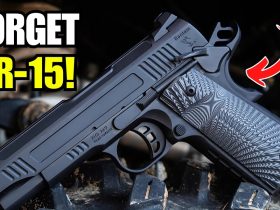



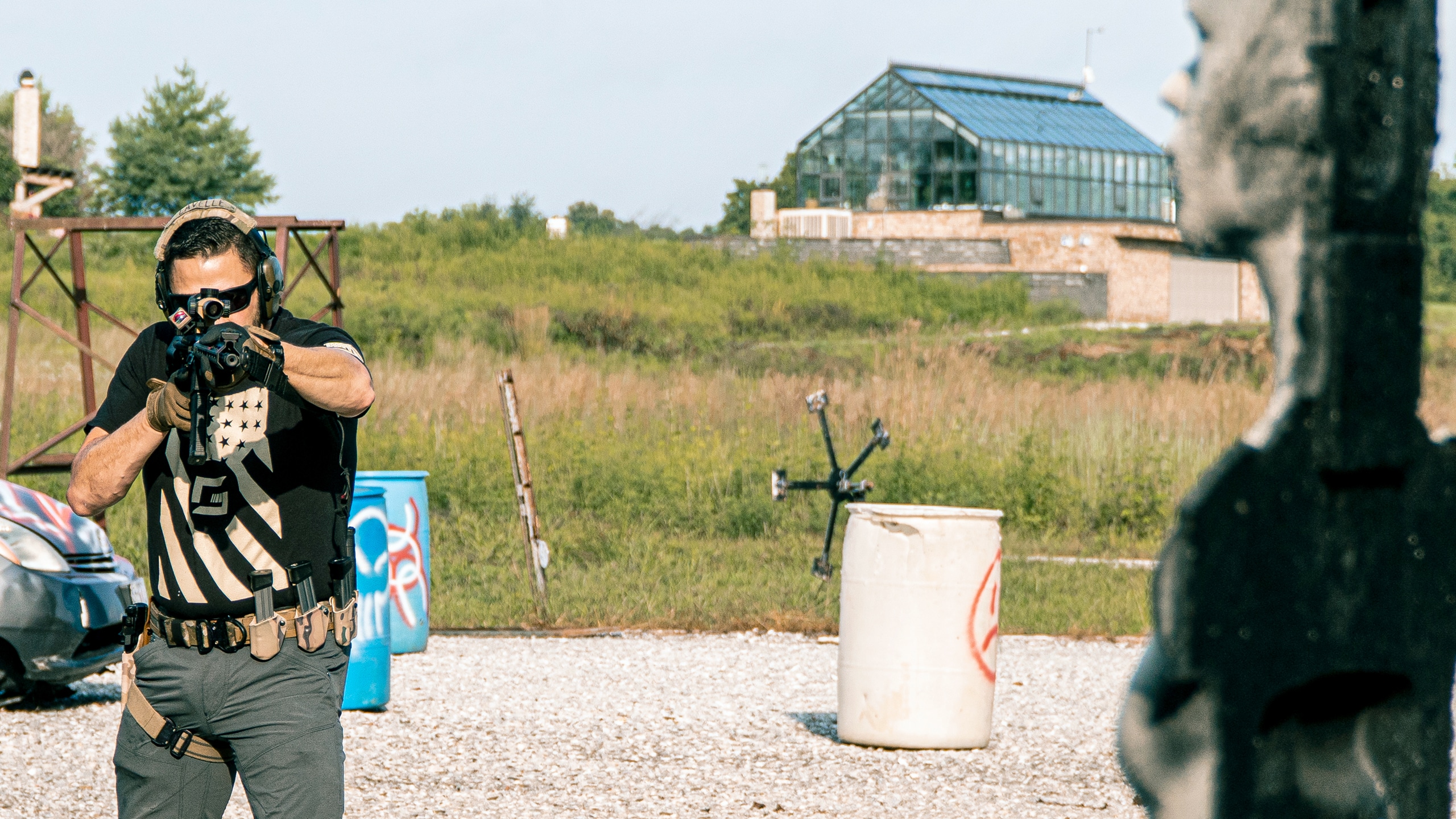

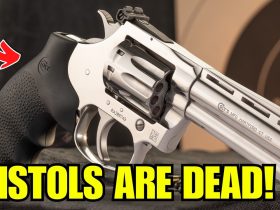

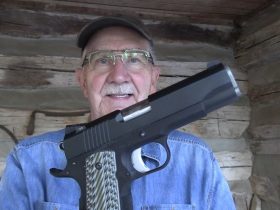




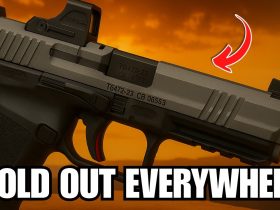
Leave a Reply